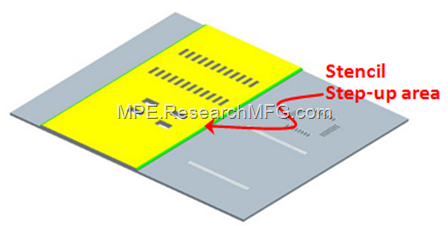| Trouble | Suggested Remedies (Solutions) |
| DIMENSIONAL PROBLEMS | |
| Shot-to-shot dimensional variations |
|
| Warping 彎曲變形 |
|
Seach This Blog
Tag Cloud
AOI Baking BGA CAF Carrier Component drop/detachment Concept Contamination Cpk DFx ECM (Electrochemical migration) EDX/EDS/SEM ENIG FATP Fishbone Flux FVT Glossary Gold HASL HIP(Head-In-Pillow) ICT IMC Manufacturing glossary MFI newbie NWO(Non-Wet-Open) OSP Panel & De-panel PIH Problem analysis & solving Reliability Short circuit small-talk Solder broken crack Soldering Solder paste Stencil Temperature Profile Troubleshooting V-cut Video/Youtube Warpage Wave-soldering X-raySponsor
Categories
- Case study
- Connector
- Corrugated Paper
- Design
- EDX/EDS/SEM/IMC/FTIR
- Fundamental Science
- Glue/adhesive/epoxy/underfill,
- Keypad
- Management
- Manufacture
- Moisture Sensitive
- PCB/FPC/PTF
- Personal Opinion
- Plastic
- Process
- Product Introduction
- Quality
- Reliability
- Role & Responsibility
- SMT
- Soldering
- SPC
- Test/Inspection
- Uncategorized
Bookmarks
Histats
Statcounter
Email Subscription

 One day, my manager asked me a question: “Will changing the components from SMDs (Surface Mount Devices) to THDs (Through Hole Devices) and using the PIH (Paste-In-Hole) process affect the process and design?”
One day, my manager asked me a question: “Will changing the components from SMDs (Surface Mount Devices) to THDs (Through Hole Devices) and using the PIH (Paste-In-Hole) process affect the process and design?”
 The trend in the electronics industry is toward smaller and smaller SMD components, with sizes such as 0402, 0201, and even 01005 becoming common (Note 1). Additionally, the pitch between pins on ICs has decreased to a fine pitch of 0.5mm, and even 0.3mm, posing a challenge for the SMT process.
The trend in the electronics industry is toward smaller and smaller SMD components, with sizes such as 0402, 0201, and even 01005 becoming common (Note 1). Additionally, the pitch between pins on ICs has decreased to a fine pitch of 0.5mm, and even 0.3mm, posing a challenge for the SMT process.